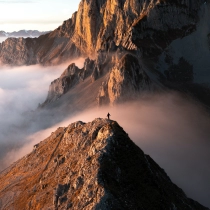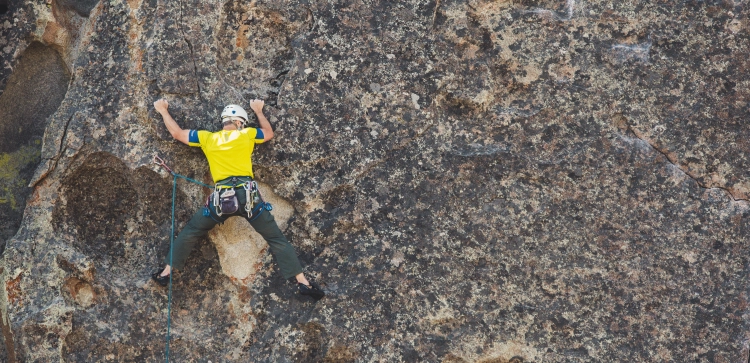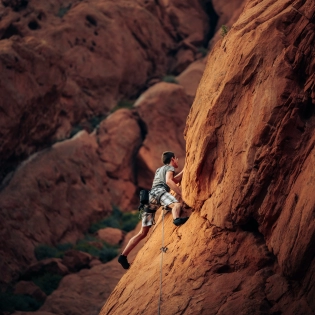Bouldering For Beginners: A Step-by-Step Approach To Getting Started

Are you ready to embark on an exciting journey into the world of bouldering? Whether you're drawn to the physical challenge, the mental focus, or the sheer joy of conquering a rock face, bouldering is a fantastic sport that offers a unique combination of strength, technique, and problem-solving. In this beginner bouldering guide, we'll walk you through the essential steps to get started on your bouldering adventure, providing you with tips and focus points to help you improve and progress along the way.
- Why Bouldering?
- Step 1: Find A Bouldering Gym Or Outdoor Spot
- Step 2: Gear Up With The Essentials
- Step 3: Master The Basic Techniques
- Step 4: Warm-Up And Stretch
- Frequently Asked Questions
- How Often Should I Boulder As A Beginner?
- What Are The Common Bouldering Injuries And How Can I Prevent Them?
- How Can I Improve My Grip Strength For Better Bouldering?
- Should I Use A Climbing Brush To Clean Holds?
- Can I Boulder If I Have A Fear Of Heights?
- Conclusion
- Community Questions · 0
Why Bouldering?
Bouldering is a type of rock climbing that involves scaling shorter rock formations without the use of ropes or harnesses. It's a fantastic entry point for beginners as it requires minimal equipment and can be done both indoors and outdoors. Bouldering allows you to challenge yourself physically and mentally while building strength, balance, flexibility, and problem-solving skills.
So, why should you start bouldering? Because it's an exhilarating and rewarding sport that will push your limits, boost your confidence, and immerse you in a supportive and passionate community.
Step 1: Find a Bouldering Gym or Outdoor Spot
To get started with bouldering, you'll need to find a suitable location. Look for a local bouldering gym or an outdoor climbing spot that caters to beginners. Bouldering gyms often have designated areas for beginners with routes marked by different colors, indicating varying difficulty levels. These gyms provide a controlled and safe environment for you to learn and practice.
Step 2: Gear Up with the Essentials
Bouldering requires minimal gear, but having the right equipment is crucial for safety and comfort. Here's what you'll need as a beginner:
- Climbing shoes: Invest in a pair of well-fitting climbing shoes that provide grip and sensitivity. They should be snug but not painfully tight.
- Chalk bag: Chalk helps keep your hands dry for a better grip. Get a chalk bag and some climbing chalk to apply as needed.
- Crash pad: If you're bouldering outdoors, a crash pad provides cushioning in case of falls. Look for a durable and thick pad to protect yourself.
Step 3: Master the Basic Techniques
Before diving into the more challenging climbs, it's essential to learn and practice the basic techniques. Focus on the following:
Footwork:
- Place your weight on your feet rather than relying solely on your arms.
- Use the edge of your climbing shoes for better grip.
- Look for footholds and plan your foot placements ahead.
Handholds and Grip:
- Practice different handholds, such as crimps, jugs, and pinches.
- Maintain a relaxed grip and avoid over-gripping.
- Learn to shift your body weight efficiently to conserve energy.
Body Positioning and Movement:
- Keep your hips close to the wall to maintain balance.
- Engage your core muscles to stabilize your body.
- Learn how to use momentum and body positioning to reach holds effectively.
Step 4: Warm-Up and Stretch
Before each bouldering session, warm up your muscles with light cardio exercises like jumping jacks or jogging, or which ever exercise you prefer that can get you warmed up. Afterward, focus on dynamic stretches that target your upper body, core, and lower body. Warming up and stretching help prevent injuries and improve your climbing performance.
Frequently Asked Questions
How often should I boulder as a beginner?
As a beginner, it's recommended to start with 2-3 bouldering sessions per week. This frequency allows your body to adapt and recover while still making progress. As you become more experienced and your body adjusts, you can increase the frequency if desired.
What are the common bouldering injuries and how can I prevent them?
Common bouldering injuries include sprained fingers, tendonitis, and strains. To prevent these injuries, it's crucial to warm up properly, stretch before and after sessions, and listen to your body. Gradually increase the intensity and duration of your climbs, and take rest days to allow your body to recover. Proper technique, such as using open-handed grips and avoiding overuse, can also help minimize the risk of injury.
How can I improve my grip strength for better bouldering?
Improving grip strength is essential for bouldering. You can enhance your grip strength by incorporating specific exercises into your training routine. Some effective exercises include fingerboarding, hangboard workouts, grip strengtheners, and using a campus board. Consistency and progressive overload in your training will help build strength over time.
Should I use a climbing brush to clean holds?
Yes, using a climbing brush to clean holds is important. Chalk buildup, dirt, and sweat can make holds slippery and affect your grip. Brushing holds before climbing removes excess chalk and debris, making them easier to hold. Carry a climbing brush with you and give the holds a quick brush before attempting a problem.
Can I boulder if I have a fear of heights?
Yes, bouldering can be a great way to overcome a fear of heights. Since bouldering is done closer to the ground and doesn't involve ropes or harnesses, it can provide a controlled environment to face your fear gradually. Start with lower climbs and work your way up as you gain confidence. Remember to focus on the movement and technique rather than the height, and take it at your own pace.
Conclusion
Bouldering is an incredible sport that offers a multitude of physical and mental benefits. By following this step-by-step guide, you'll be well on your way to becoming a confident and skilled boulderer. Remember to start at your own pace, challenge yourself, and embrace the journey of improvement. So gear up, find a gym or outdoor spot, and let the bouldering adventure begin!

















